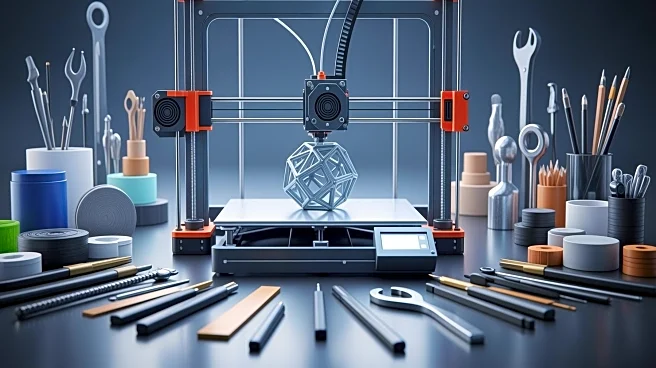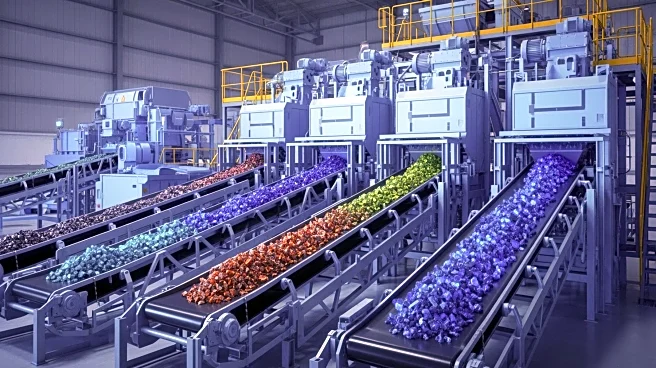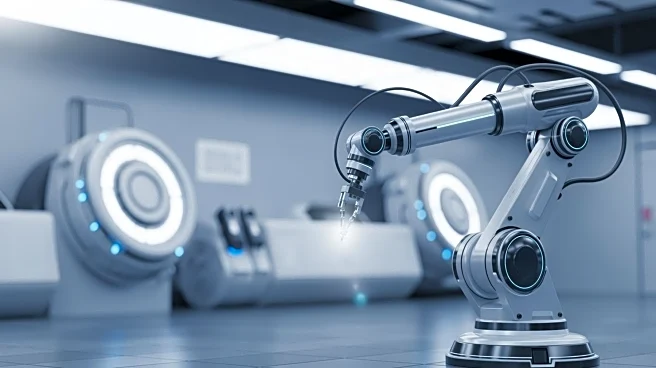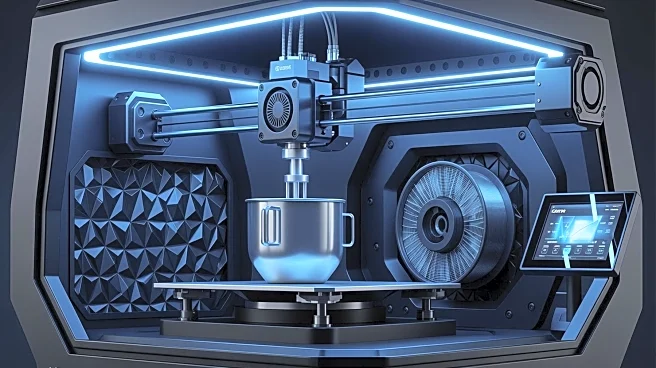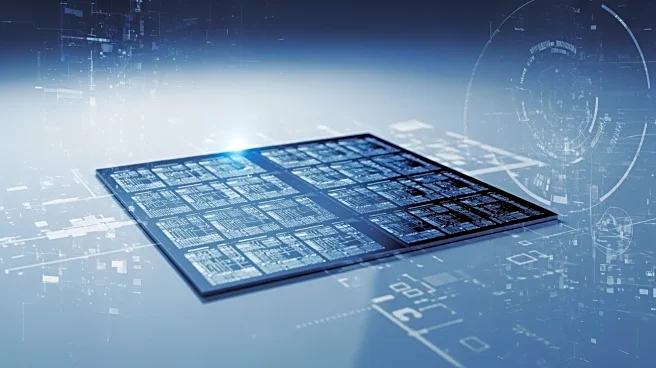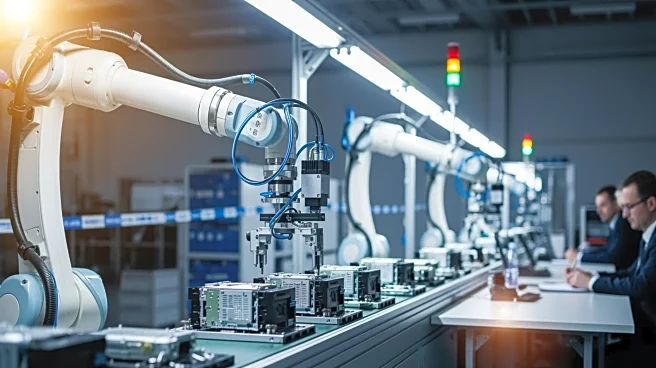What's Happening?
Additive manufacturing (AM), once considered a niche technology for prototypes and quick repairs, is now becoming a fundamental component of modern production across various industries. This shift is highlighted
by its integration into mainstream products, such as the titanium USB-C port in Apple's new iPhone Air, which was 3D printed rather than machined. The adoption of AM allows manufacturers to bypass traditional tooling processes, enabling faster iterations, lighter parts, and greater design freedom. This 'tool-less' approach reduces lead times and costs associated with retooling, making it a strategic advantage for industries like aerospace, medical, automotive, and consumer electronics. AM also addresses supply chain challenges by allowing on-demand production of legacy and spare parts, thus reducing downtime and inventory costs.
Why It's Important?
The widespread adoption of additive manufacturing is significant as it represents a paradigm shift in production methodologies. By eliminating the need for traditional tooling, AM offers manufacturers the ability to rapidly prototype and produce parts, which can lead to significant cost savings and increased efficiency. This is particularly beneficial in industries where design changes are frequent and lead times are critical. Additionally, AM's ability to produce lightweight components can contribute to sustainability efforts, such as reducing CO2 emissions in aerospace applications. As companies increasingly integrate AM into their operations, they gain a competitive edge by being able to quickly adapt to market demands and technological advancements.
What's Next?
As additive manufacturing continues to gain traction, companies are likely to explore hybrid manufacturing approaches that combine AM with traditional methods to maximize benefits. This includes using AM for near-net-shape parts that are then finished with CNC machining for precision. The focus will also be on developing digital skills, such as CAD and simulation expertise, to fully leverage AM's capabilities. Manufacturers may also expand their use of AM to more complex and high-volume applications as the technology matures and becomes more cost-effective. Collaboration with technology providers will be crucial to integrate AM seamlessly into existing workflows.
Beyond the Headlines
The rise of additive manufacturing also raises questions about workforce skills and training. As AM relies heavily on digital processes, there is a growing need for workers skilled in software and simulation tools. This shift may lead to changes in educational and training programs to prepare the workforce for the digital manufacturing landscape. Additionally, the environmental impact of AM, particularly in terms of material waste and energy consumption, will be an area of focus as industries strive for more sustainable production practices.
